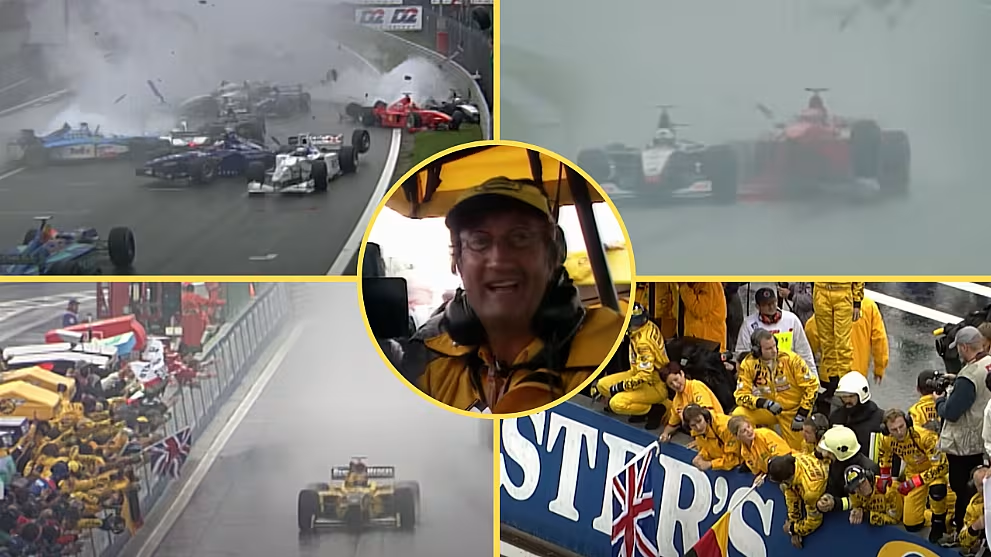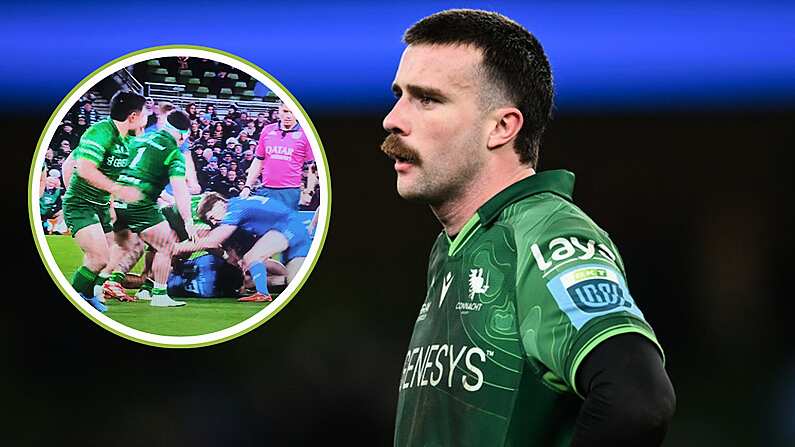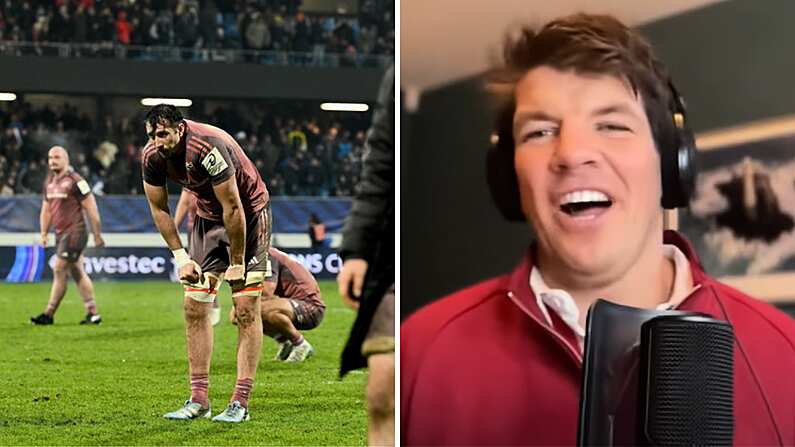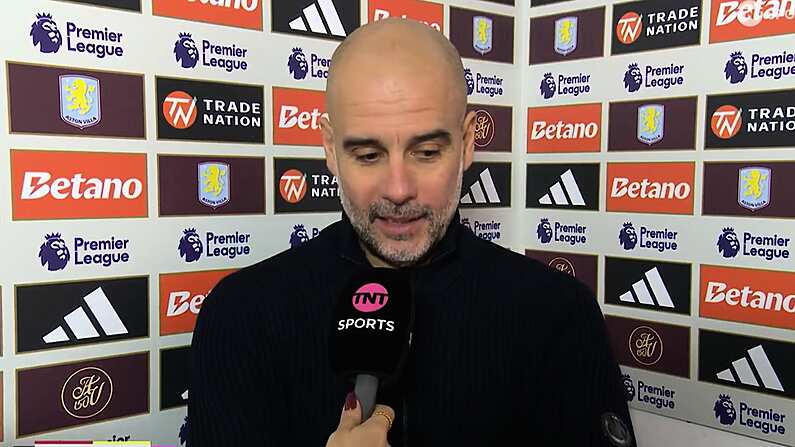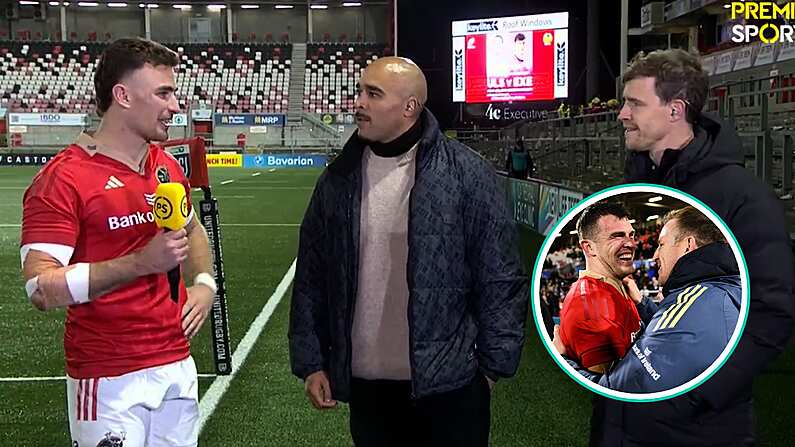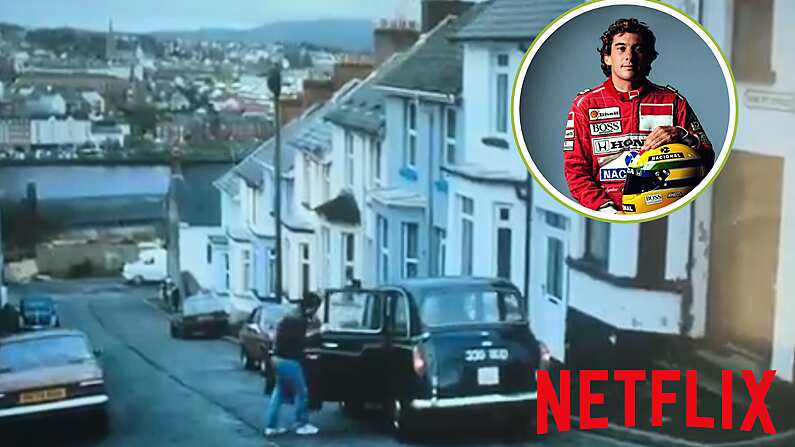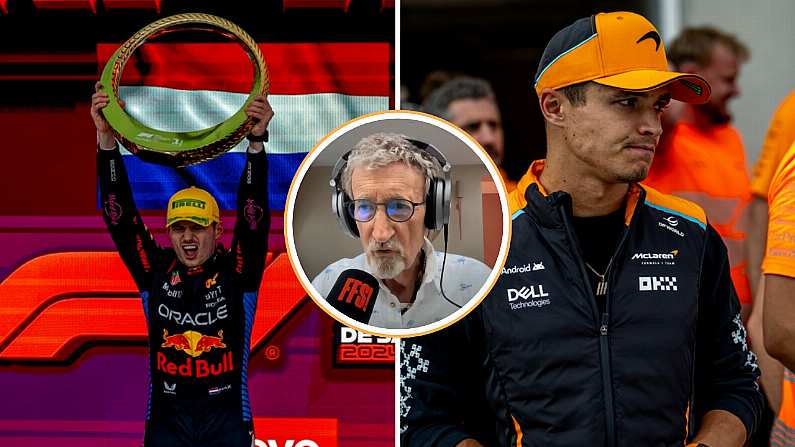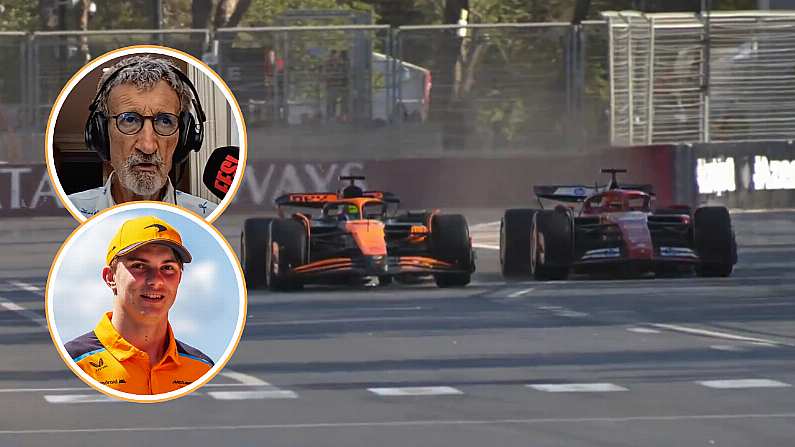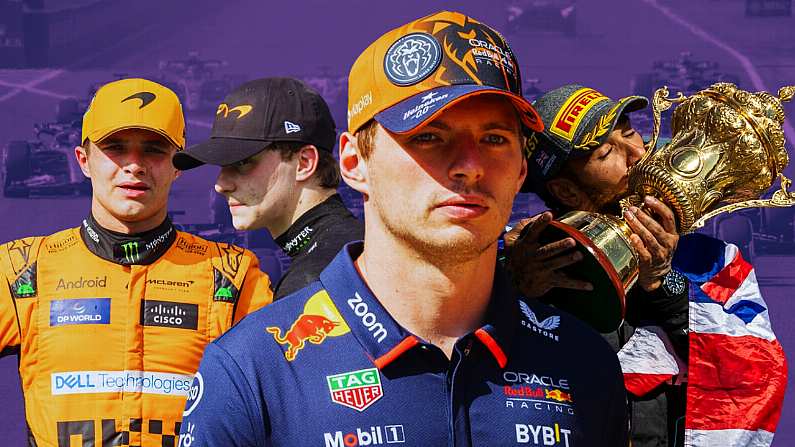One of the most intriguing events in the recent history of F1 is upon us, as the utterly bizarre Las Vegas Grand Prix is set to get underway in Nevada this weekend.
The iconic Vegas strip will see the world's fastest race cars flying past all the cities major landmarks, hotels, and casinos, in a desert night race which is beginning to seem like one of the less wise ideas Liberty Media have had since acquiring a controlling stake in Formula 1 in 2016.
Though it will undoubtedly make for a spectacular backdrop, the work needed to get the Las Vegas strip ready for a Formula 1 Grand Prix has ruffled the feathers of many of the city's residents.
Businesses have been forced to change operating hours, roads have been closed causing chaos for residents to get to their places of work, and some of the landmarks expected to form some of that immense backdrop - such as the Bellagio Fountains - have even had to be temporarily removed to create the new race track.
Formula 1 have even gone so far as to apologise to local residents for the disruption caused.
Couple all of those concerns with those of Max Verstappen (and many fans) that the track simply won't be particularly exciting, and the obvious concerns that come with trying to safely operate a race car in sub-10 degree temperatures in the middle of the night, and you can understand why many are fearing this could be a new disaster to add to Formula 1's long list of blunders in the US.
Max Verstappen made it very clear he is not a fan of the show surrounding the #LasVegasGP 👀
Do you agree with the triple world champ? 🤔#F1 pic.twitter.com/PMjIRUcNoy— Autosport (@autosport) November 16, 2023
This will be the third US Grand Prix in 2023, the first time that has happened since that 1982 season. F1 continues to experience a boom of popularity in the country off the back of the popularity of Drive to Survive - well, it seems, everywhere but Vegas.
It's not long ago that F1 appeared doomed to fail Stateside, and the chaos surrounding the Vegas race has brought those memories flooding back.
Years of poor tracks that weren't designed for Formula One, farcical venues, and a lack of interest from a fanbase enamoured with NASCAR and IndyCar seemed set to end F1's chances of cracking the American market.
Ahead of this weekend's return to Las Vegas (yes, they've been here before...), we decided to take a look back at some of the most farcical incidents from the sport's early attempts to make it big Stateside.
Read on to learn about the track that began to break up, drivers fainting at the finish line, the race in a carpark, and the Grand Prix with only six starters...
READ HERE: How Ireland's Jordan Team Made F1 History With Their First Race Win
READ HERE: Sex Pistols And Schumacher: Peter Collins On A Crazy Decade Covering F1
The dotted history of Formula 1 in the US
In the opening years of the F1 championship, the iconic Indy 500 race at Indianapolis counted towards the world championship, despite most of the regular F1 teams and drivers choosing not to enter the race.
The decision to include the 500-mile race on the calendar was a strange one given the different regulations, and it was ultimately irrelevant to the championship in each of the 11 seasons it was part of the calendar between 1950 and 1960.
1958 through 1961 saw three venues host the US Grand Prix in four years, with Sebring and Riverside Raceways both coming and going before F1 settled at the iconic Watkins Glen Circuit.
Grands Prix would be held at Watkins Glen for 20 consecutive years, before the final race held in upstate New York took place in 1980, won by Alan Jones on his way to that year's world drivers' championship. The well-liked Long Beach Circuit in California was added in 1976, and stayed on the calendar until 1983.
#ONTHISDAY 1980: The last of 20 #F1 races held at Watkins Glen in the US. Australia's Alan Jones won for Williams. pic.twitter.com/8sXiG5DmlS
— Formula 1 (@F1) October 5, 2015
When Watkins Glen departed in 1980, things start to get a bit ridiculous for F1 in the USA.
Off the back of the global attention brought to the sport by James Hunt and Niki Lauda's 1976 title battle (immortalised further by Ron Howard's 2013 film Rush), F1 were attempting to break the American market, and decided to continue racing twice per season in the US.
The 1981 season opened in Long Beach, before an inaugural visit to one of the sport's most loathed circuits - Caesars Palace in Las Vegas.
On the surface of it, a race in Las Vegas seems perfectly and suitably glamorous for a sport of F1's nature. It's when you dig deeper and realise that this race was held on a miniscule, unremarkable, narrow track, in the car park behind one of Vegas' most iconic hotels, that the whole endeavour becomes completely ridiculous to comprehend.
What the Mirage and the Forum Shops looked like in 1981. The Caesars Palace Grand Prix race track. pic.twitter.com/XzAGD1Xo2o
— Classic Las Vegas (@classiclasvegas) September 3, 2018
The track not only looked farcical, but produced dire racing. Incredibly, two consecutive drivers' championships were decided at the track, as it hosted the 1981 and 1982 title deciders. Nelson Piquet won in 1981, before Keke Rosberg (father of Nico) won the '82 title. By the standards of Caesars Palace, the Yas Marina Circuit becomes a lot more palatable as a modern day title decider venue.
The echoes of the Caesars Palace Grand Prix resonate today with the questionable track layout decided upon for the 2023 Las Vegas Grand Prix. It may be more inspiring than the circuit used for those 1981 and '82 races - but that is not saying much, and the most remarkable thing about it may be that it resembles an upside down pig.
Then the f1 cirquif of las vegas ia a pig ?? pic.twitter.com/PwPprY9kx9
— Motorsport news (@AlessioMedici5) November 9, 2023
The Caesars Palace Grand Prix was dropped after the 1982 season - a season in which F1 travelled Stateside three times, with further Grands Prix at Long Beach and Detroit. The Detroit Grand Prix posed a brutal physical test to the drivers, with the track crossing over a railway at one point, as well as taking in 17 corners in just four kilometres of track.
But iff Detroit was tough on the drivers, it was nothing compared to the Phoenix Street Circuit, which hosted the US Grand Prix between 1989 and 1991. Arizona is hot at the best of times, but running the GP in early June in 1989 ensured that the race was run in unbearable heat, with temperatures approaching 40 degrees Celsius.
A classic clip from the #USGP archives 🎞
Jean Alesi and eventual race winner Ayrton Senna going toe-to-toe on the streets of Phoenix 💪#F1 🇺🇸 pic.twitter.com/An46JMp1te— Formula 1 (@F1) October 16, 2018
Formula One had made the exact same mistake on their only visit to Dallas in 1984. Conditions were so hot in Dallas that Nigel Mansell fainted pushing his car across the finish line, after it broke down metres away from the finish. Only eight cars managed to finish that 1984 race in Dallas, and Formula One did not return.
Just as in Dallas and Detroit, the track began to crack and break up in Phoenix. Of the three failed street circuits, Phoenix produced the best racing action - but the heat, and the track conditions, made it a hugely unpopular circuit, and it was binned after the 1991 event.
That 1991 GP - the season opener - saw the debut of the Irish Jordan team.
25 years ago #OnThisDay, the Jordan #F1 team makes its debut at the 1991 #USGP in Phoenix pic.twitter.com/AOF4zBOB1P
— Formula 1 (@F1) March 10, 2016
In the space of just over a decade after the departure of Watkins Glen, Formula 1 had now tried and failed to make an incredible five American circuits work for the world championship. The worst was yet to come for the sport's relationship with the American public.
In 2000, the sport returned to the United States for the first time in nine years, with the US Grand Prix taking place at the iconic Indianapolis Motor Speedway. This time, however, the race took place on a specially constructed infield circuit, rather than running on the full oval course. The final corner of the track took in the first corner of the oval track - in reverse.
The race had a turbulent history. In 2002, a bizarre ending saw Michael Schumacher slow down approaching the finish line, in an apparent attempt to stage a dead heat with Ferrari teammate Rubens Barrichello. He said afterwards that he had done so in order to repay Barrichello for moving aside to allow Schumacher to win a race in Austria earlier that season.
The close finish between the pair saw them finish just one hundredth of a second apart at the finish line. It made for a dramatic still shot, but the second attempt from Ferrari to fix a race result in 2002 was not a popular move.
1 - R Barrichello
2 - M Schumacher +0.011s#OnThisDay at Indianapolis 14 years ago pic.twitter.com/ucONEzEs3t— Formula 1 (@F1) September 29, 2016
In the end, however, Formula One hit the nadir of its relationship with the United States at the 2005 GP at Indianapolis.
The oval corner used to round off the lap had become a hazard, with massive crashes for Ralf Schumacher in successive years at the corner ringing alarm bells for the teams. The 2005 crash was caused by a failure of his tyre, and safety concerns were raised by Michelin. The corner was banked, and taken at incredibly high speed, putting strain on the Michelin tyres that they simply could not withstand.
This Grand Prix took place in an era in which teams could choose their own tyre manufacturers, and Michelin provided tyres for the vast majority of the grid. After several solutions to the safety issues were proposed and shot down, Michelin couldn't guarantee that drivers running their tyres would be safe and so, after the warm up lap, 14 of the 20 cars pulled in to the pitlane, leaving just six starters for the United States Grand Prix.
Indianapolis Motor Speedway.#OnThisDay in 2005.
The biggest shame in Formula One history. pic.twitter.com/VsHSLZjf0T— Senna 🇧🇷 (@sennatheking) June 19, 2021
Fans booed, and understandably so. The race saw almost no action, with the two Ferraris of Schumacher and Barrichello finishing a full lap ahead of third placed Tiago Monteiro in the Jordan.
Quaintly, Monteiro's P3 remains the only podium for a Portuguese driver in Formula One history - and it would go on to be the last podium ever taken by Jordan, as Dubliner Eddie Jordan would sell the team at the end of the 2005 season.
He seemed to be the only man enjoying the 2005 United States Grand Prix.
In a very controversial Indianapolis Grand Prix (2005) where only 6 cars raced due to the Michelin using cars forfeiting the race, Tiago Monteiro started and finished 3rd and, despite the controversy, this didn't stop Tiago's ecstatic podium celebrations. pic.twitter.com/6iDsxhXyvW
— crazy ass moments in portuguese sports (@desportonatuga) April 10, 2022
F1 would leave Indianapolis after the 2007 race, and it would be another five years before the sport found a new home in the USA - the purpose built Circuit of the Americas outside Austin.
"COTA", as it has become affectionately known, has stayed on the calendar for over a decade now, only missing 2020 due to the impact of the pandemic. Its staying power can be attributed to several factors, but the most important is that the track was purpose built with Formula One cars in mind, and so has been perfectly suited to F1 racing since its arrival in 2012.
Since the first COTA race in 2012, it has played host to many iconic moments. Lewis Hamilton sealed his third and sixth world championships there in 2015 and 2019 respectively, while the last three races in succession have seen thrilling battles for the win between Hamilton and Max Verstappen.
Verstappen won out on both occasions, as he did on both the first two visits to Formula 1's most recent American addition, the Miami Grand Prix.
The phrase "fever dream" comes to mind when trying to devise a suitable term to explain the whiplash of F1's first two visits to the circuit around Hard Rock Stadium in Miami Gardens.
There have been incredibly awkward celebrity interviews, police escorts to the podium, concerns over track safety and, amid all of it, even some racing on the track.
You can expect much of that to rear its head once again as Formula 1 dives into the unknown once again in Las Vegas this weekend.
For the first time in decades, Stateside F1 fans have three opportunities to enjoy the "pinnacle of motorsport" on home soil. One only hopes that things don't follow a similar path of farce and fallout as they did in the years following the Caesars Palace jaunts of the early 1980s.
The Las Vegas GP gets underway at 6am Irish time on Sunday morning.



